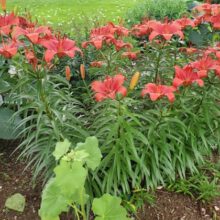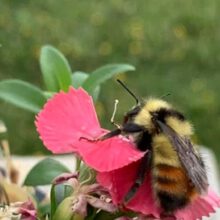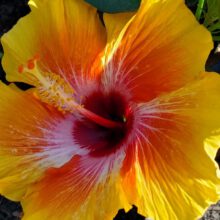Tips For Wintering Within Your Garden
For avid gardeners, winter is a time when hands start to itch, but there’s nothing left to do but wait for spring. However, there are still things to do in the garden in winter. Here and there, even a shrub or plant can bloom, and of course there are still the necessary garden jobs to do.
Chance of color.
Arrowwood (Viburnum bodnantense) starts blooming when it is still mild in the fall. And because (almost) nothing flowers then, the pink flowers are extra beautiful. With a little frost, the flowers freeze, but the buds can open again after the frost period. In fact, this can continue all winter long: cold periods without flowers followed by milder periods with flowers. All unopened buds will hatch in the spring. Depending on the temperature in winter, the bush turns completely pink, or you only occasionally see a flower.
Pruning is done once a year or two years after flowering. You prune the thickest branches just above the ground. This way you can easily keep the shrub young.
Insulate the greenhouse with bubble wrap.
Where do you let your plants hibernate? If you insulate your greenhouse, everything in it survives the winter. That is very easy to do. A roadmap:
Remove all plant remains and tidy up your greenhouse.
Clean the inside of the glass with mild soap and warm water to prevent pathogens from surviving.
Remove the top layer of the soil (also has to do with pathogens).
Apply bubble wrap to the inside of the greenhouse.
From about mid-December you can put in a heater with a thermostat. Make sure it is always about 5 degrees Celsius in the greenhouse. Occasionally open a window or open the door ajar if it does not freeze; then it can air well.
The gardener also has to hibernate.
What do you prefer to do in frost? A tip: go through the seed catalogs (online or not). Preferably, of course, with a warm stove. This way you can already look forward to the new season. And a tip for next year: take clear overview photos of your borders in the summer. This way you can see exactly what is where in the winter and what you want to change. This way you can always be busy with your garden.
Snow is heavy.
What nice pictures it gives: your winter garden under the snow. Take a picture quickly, because after that it is best to remove a pack of snow from your plants as soon as possible. Snow is heavy and that also means that the branches of trees and shrubs become a lot heavier. Branches of conifers can snap off very easily. Special pruning shapes are also sensitive to the weight of snow: they literally get out of shape. Boxwood and yew collapse easily due to the weight of the snow. Of course that does not happen with the slightest, but with more than 10 cm or with wet snow (much heavier) you should definitely get started. Honeysuckle, conifer, young rhododendrons and bamboo are also vulnerable. Snow removal is a requirement for those species to be able to overwinter.
Sprinkle homemade compost.
Winter is a good time to sprinkle your own compost on your lawn and among your plants. The lawn now has time to regain some structure in the soil, so that fertilizers and moisture are better retained. Plants and grass do not suddenly grow better from compost, but they clearly get a better time. After a year or two of conversion, your own compost is suitable to use.
Autumn fertilization.
In October or November it is time to sprinkle a specially made fertilizer on your grass. This slow-acting autumn fertilizer helps your grass to winter healthy. It ensures that your grass remains greener during the winter. You can then sprinkle lime in December. It takes about three months for the lime to start working. Ideal, because then it is absorbed by the plants in about March. You sprinkle this mainly on grass and also in the border. Lime lowers the acidity of the soil, helping you fight moss. For the correct dosage it is important to measure the pH value of your soil. You can have your soil tested at many garden centers, after which you will receive advice on how much to add.
Trimming trees.
Haven’t pruned your walnut, birch or maple trees yet? It must have happened by mid-December. Then the sap flows start, and you can damage the tree. It then bleeds after pruning and thus loses important substances. Nut trees should actually be pruned as soon as the last nuts are on the ground, that is the very best.



